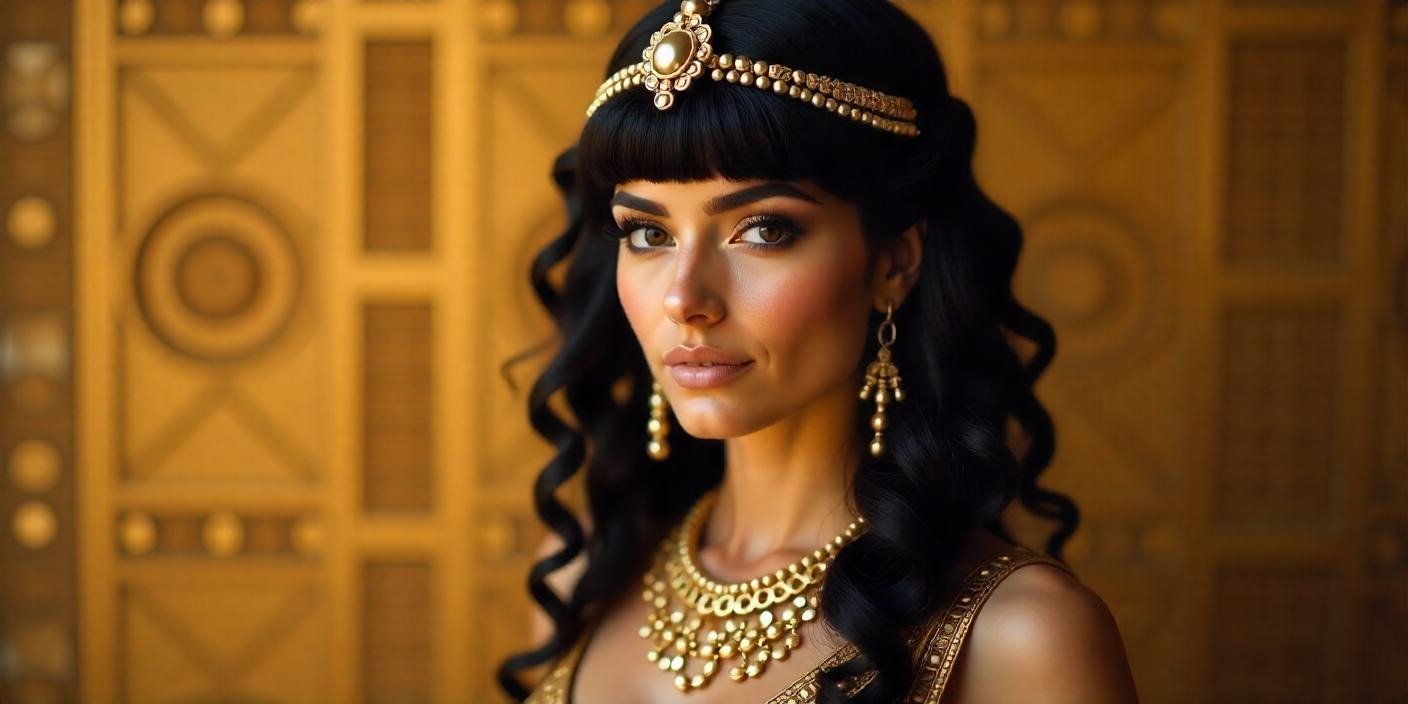In ancient Egypt, hairstyles were not merely a part of personal fashion but also symbolized deeper cultural meanings and spirituality. Both men and women wore distinctive styles that reflected their social position, identity, and status within society. The blend of aesthetic appeal with symbolic significance created an intriguing link between beauty and beliefs.
These hairstyles were often more than just about following the latest trends. For instance, certain styles were reserved for royalty or religious leaders, with strict codes determining who could wear what. It is fascinating how haircuts and adornments could reveal so much about one’s role in Egyptian society, offering a powerful connection between fashion and one’s place in the grand structure of their world.
While today, modern beauty trends may inspire a more casual approach to styling, the Egyptian vision combined function with aesthetic purpose, making every style loaded with meaning and identity.
The Cultural Significance of Ancient Egyptian Hairstyles
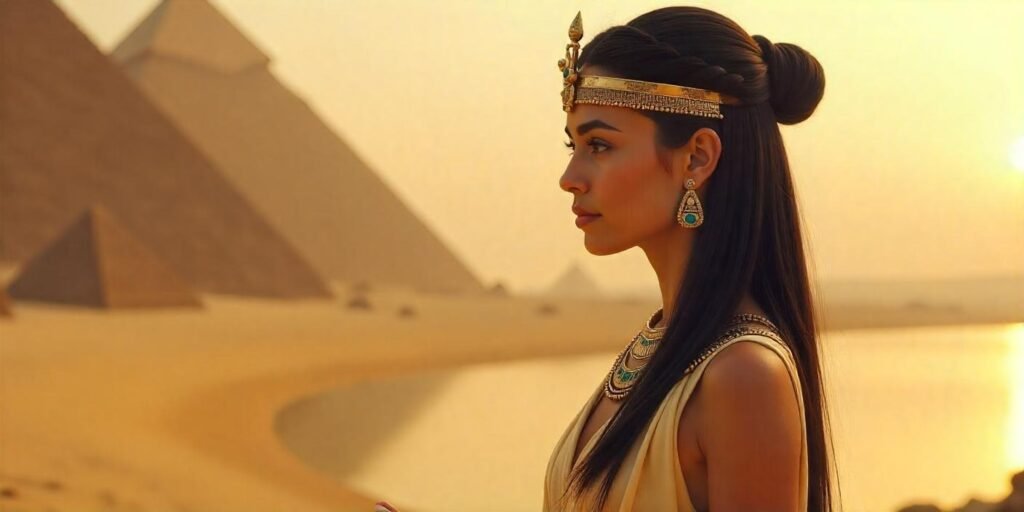
Hair symbolized social standing, identity, and religious beliefs. Pharaohs and priests wore elaborate cuts to connect with the gods, while commoners chose practical styles. It was seen as sacred, symbolizing strength, power, and fertility, and helped distinguish age groups, genders, and classes.
Common Ancient Egyptian Hairstyles for Women
1. The Wig: A Symbol of Status and Luxury
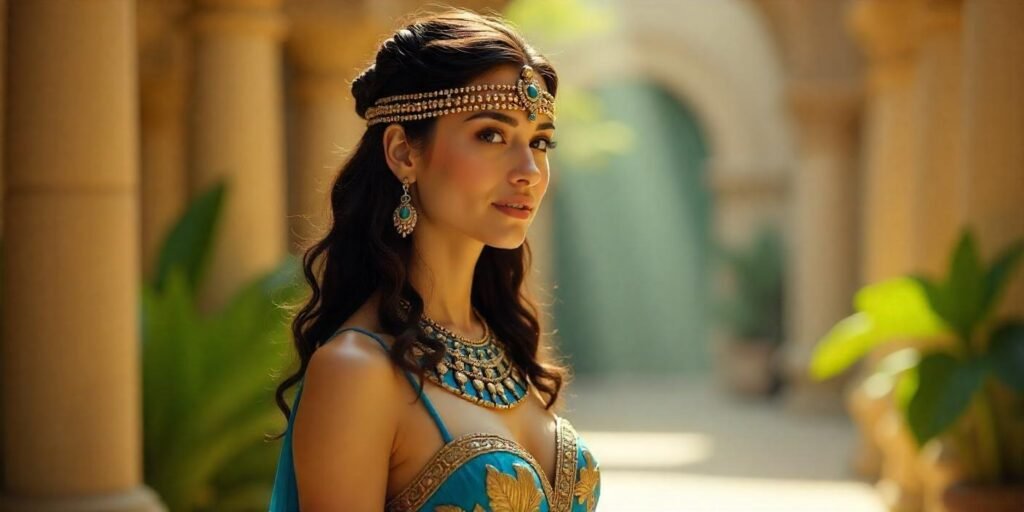
Wigs made from human hair or plant fibers were worn to signify status. Wealthy women wore elaborate wigs decorated with beads, jewels, and ornaments. These wigs often had tight curls or braids, symbolizing elegance and beauty. They also provided protection from the harsh sun while ensuring a clean and polished appearance.
2. Braids and Plaits: The Everyday Look
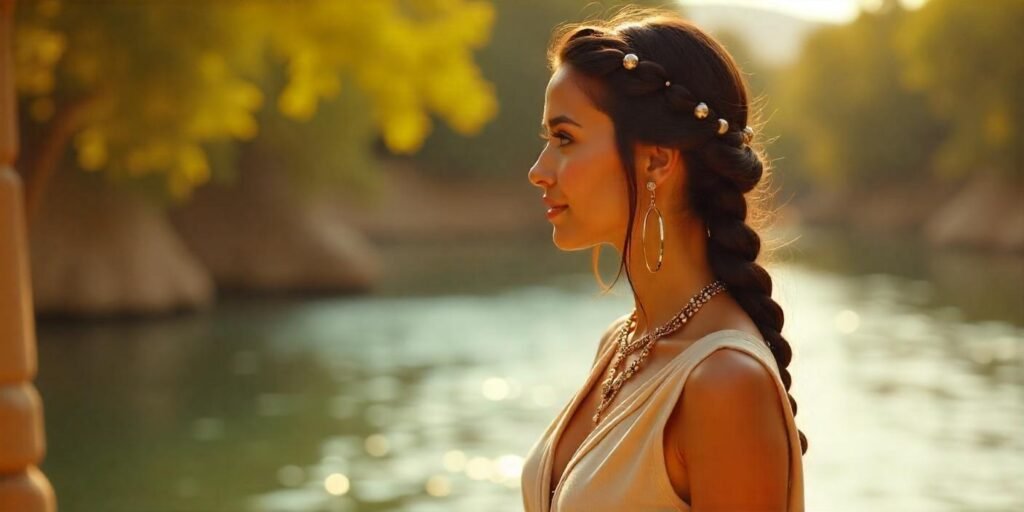
In Egypt, people often wore simple and practical hairdos, especially for managing the heat and humidity. These looks were common for both children and adults, with additions like beads and ribbons providing a touch of flair.
3. The Queen’s Crown: A Royal Statement
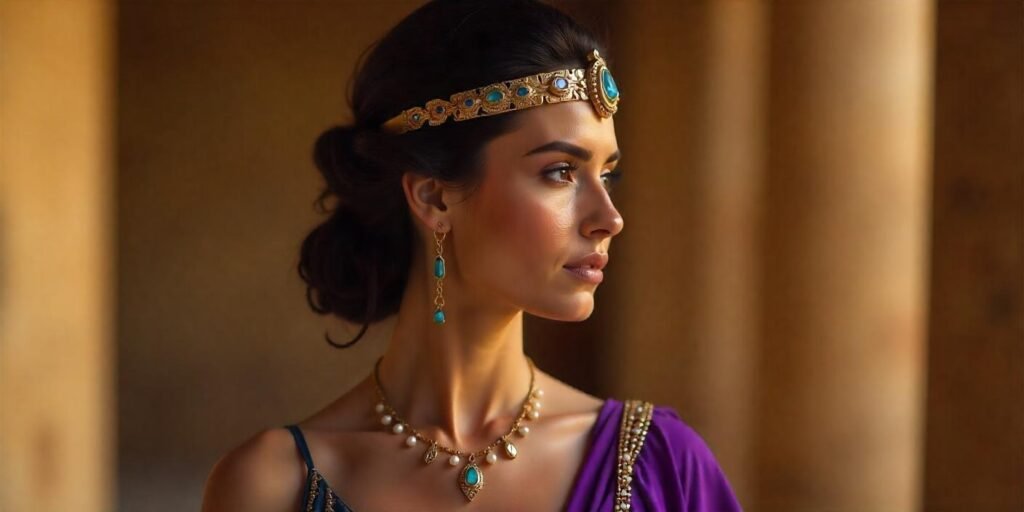
Cleopatra was often shown with crowns made of gold and precious stones, paired with intricate updos that highlighted her regal status. These royal accessories symbolized power and continue to inspire modern depictions of royalty.
Ancient Egyptian Hairstyles for Men
1. Shaved Heads and Clean-Scraped Faces.
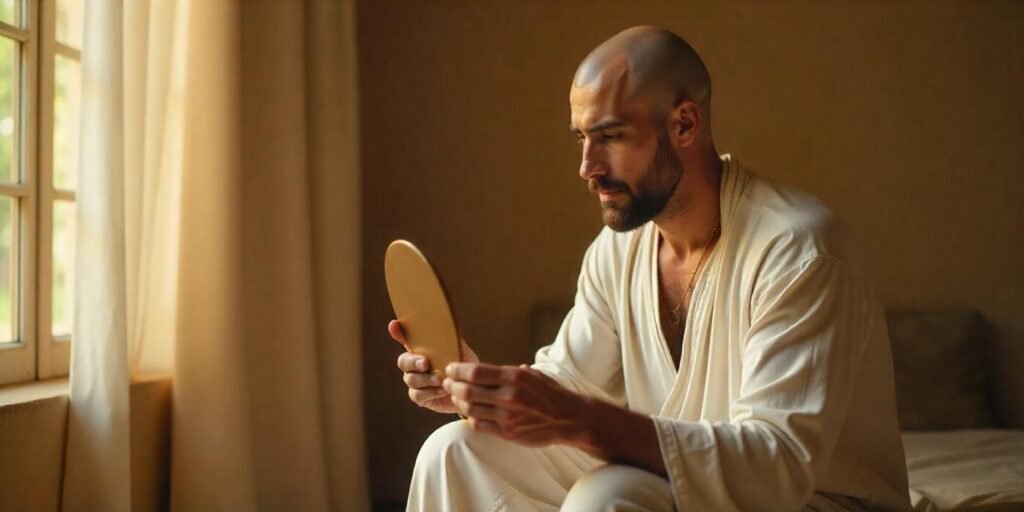
In elite men, especially priests, the clean-shaven look was part of religious rituals. It symbolized purity and helped with hygiene by preventing lice and other pests. This daily grooming routine was both practical and symbolic.
2. The Beard: A Sign of Power
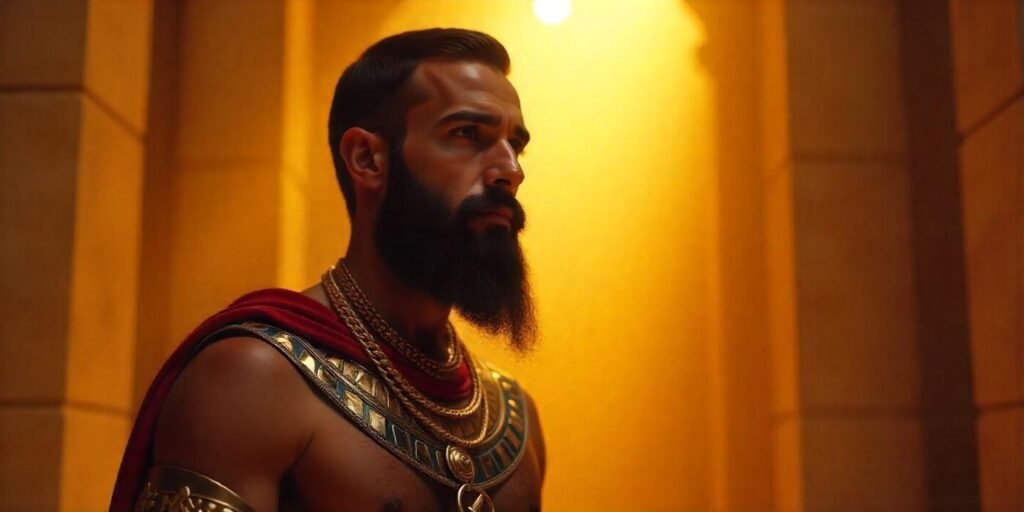
Pharaohs and gods wore metal beards, often gold, attached with straps to the chin. These beards were straight and pointed, contrasting with those of other ancient cultures.
Hairstyles for Children in Ancient Egypt
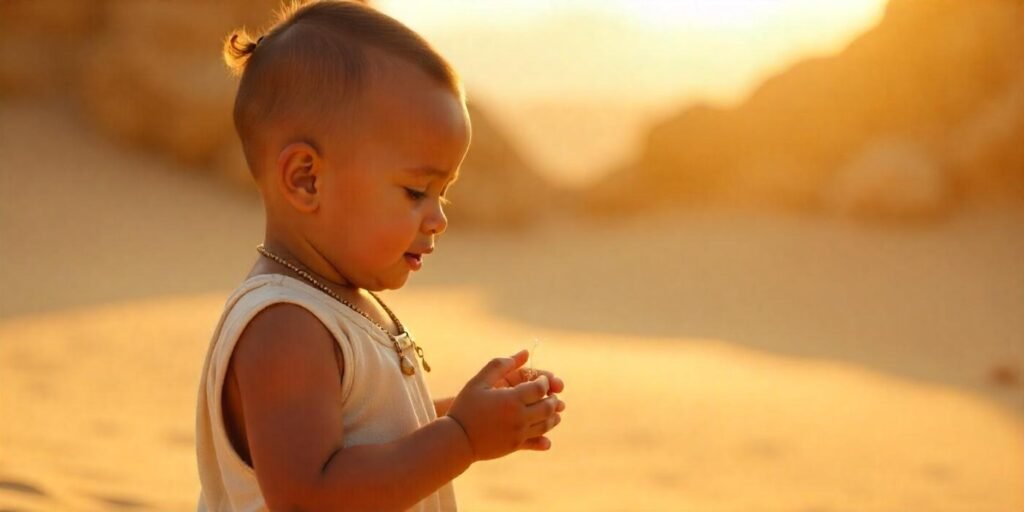
Children typically had their hair shaved or trimmed short to avoid lice and scalp issues. Wealthier families sometimes added braids or adornments to their children’s hair for style.
The Evolution of Egyptian Hairstyles
Initially, people wore simple, practical styles during the Old Kingdom. As the empire grew in wealth and stature, looks became more elaborate, with wigs and headpieces symbolizing power. By the Middle and New Kingdoms, these styles reflected diverse social classes and artistic influences from neighboring regions.
Modern Influences of Ancient Egyptian Hairstyles
Geometric designs and symmetrical haircuts have greatly influenced modern beauty trends. Celebrities such as Beyoncé and Rihanna often reference these timeless looks in their music videos, showing how wigs and symmetrical hair designs continue to shape contemporary fashion.
1. Beyoncé’s “Egyptian-Inspired” Hairstyles
In her “Ringing the Alarm” video, Beyoncé showcased an Egyptian-inspired look with eyeliner and braided hair, reflecting the intricate designs and ornate wigs worn by the elite of society.
2. Rihanna’s Cleopatra-Inspired Look
She has embraced a timeless look with hair and a headpiece, paying homage to the famous queen’s style. This modern take combines regal and headpiece elements, showcasing how past beauty trends continue to inspire today’s fashion.
How to Achieve Ancient Egyptian Hairstyles Today
Focus on wigs, hairpieces, and pyramid-shaped designs. Use silk or gold for shape and volume, adding ribbons and hairpins for a more elaborate look. Modern materials can help achieve neatness and intricacy.
- Start with a Wig or Styled Hair: For an authentic style, use high-quality synthetic fibers or natural hair to mimic intricate designs. This approach lets you experiment and find the best look before committing permanently.
- Add Beads and Jewelry: Gold, beads, and ribbons bring a touch of luxury to your hair, reflecting the elegance of ancient Egypt and elevating the overall style.
- Make Use of Symmetry: Maintaining balance in hairstyles is essential. Ensure everything is evenly spaced and follows geometric patterns for a neat, harmonious finish.
Conclusion:
In Ancient Egypt, hairstyles were not just about beauty; they were a reflection of one’s status and power. The elite class often wore elaborate wigs and braids to showcase their wealth and position in society. These hairstyles were full of symbolism, often linked to the concepts of purity, spirituality, and even the divine. The styles served both a practicality and an aesthetic purpose, blending the need for comfort in the hot climate with a strong visual representation of one’s place in the hierarchy.
These hairstyles inspired modern fashion trends, reflecting the timeless influence of Egyptian culture. However, some hairstyles were considered forbidden, reserved for the elite alone, signifying a certain level of exclusivity that continues to intrigue historians. As we study these styles, we realize how deeply intertwined they were with the values and appearance of ancient Egyptians, offering insight into their rich history and social fabric.

